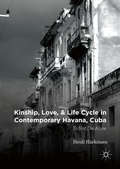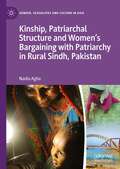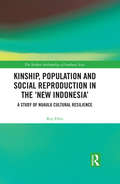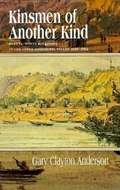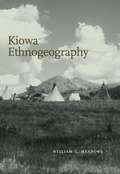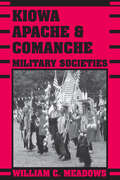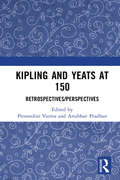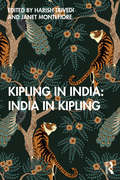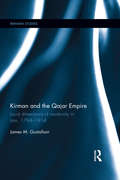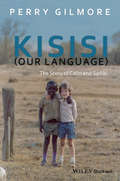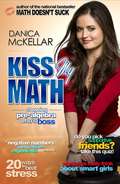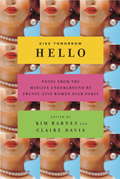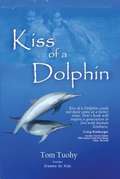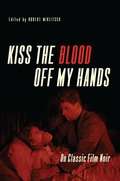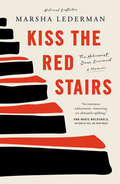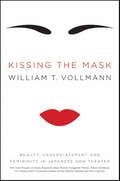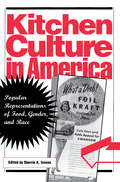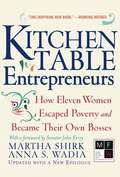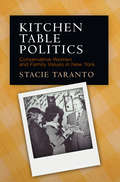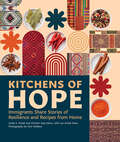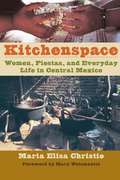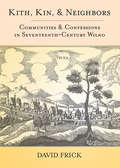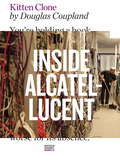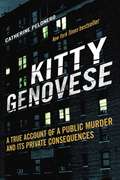- Table View
- List View
Kinship, Love, and Life Cycle in Contemporary Havana, Cuba
by Heidi HärkönenThis book is an ethnographic analysis of gender, kinship, and love in contemporary Cuba. The focus is on the lives of low-income Havana residents over the life cycle from birth to death. The book documents how kinship and love relations are created, reproduced, and negotiated at different life stages through gendered dialectics of care, important to both individuals' relationships and state politics. In the process, through a variety of practices and meanings, ranging from rituals to understandings of sexual desire, gender becomes affirmed as the central social difference characterizing Cuban society. The book argues that Cubans live their lives embedded in social networks of care that are both emotionally and pragmatically central to individual existence. At the same time, the island's contemporary political and economic changes carry gendered consequences to everyday relationships, with the potential to introduce unexpected changes to the life cycle. iv>
Kinship, Patriarchal Structure and Women’s Bargaining with Patriarchy in Rural Sindh, Pakistan (Gender, Sexualities and Culture in Asia)
by Nadia AghaThe book provides insights into the prevailing patriarchal system in rural Pakistan. It elaborates on the kinship system in rural Sindh and explores how young married women strategize and negotiate with patriarchy. Drawing on qualitative methodologies, the book reveals the strong relationship between poverty and the perpetuation of patriarchy. Women’s strategies help elevate their position in their families, such as attention to household tasks, producing children, and doing handicraft work for their well-being. These conditions are usually seen as evidence of women’s subordination, but these are also strategies for survival where accommodation to patriarchy wins them approval. The book concludes that women’s life-long struggle is, in fact, a technique of negotiating with patriarchy. In so doing, they internalize the culture that rests on their subordination and reproduce it in older age in exercising power by oppressing other junior women.
Kinship, population and social reproduction in the 'new Indonesia': A study of Nuaulu cultural resilience (The Modern Anthropology of Southeast Asia)
by Roy EllenNuaulu people on the Indonesian island of Seram have displayed remarkable linguistic and cultural resilience over a period of 50 years. In 1970 their language and traditional culture was widely considered ‘endangered.’ Despite this, Nuaulu have not only maintained their animist identity and shown a robust ability to reproduce 'traditional' ritual performances, but have exhibited both population growth and increasing assertiveness in the projection of their interests through the politics of the ‘New Indonesia’. This book examines how kinship organization and marriage patterns have responded to some of these challenges, and suggests that the retention of core institutions of descent and exchange are the consequence of population growth, which in turn has enabled ritual reproduction, and thereby effectively maintained a distinct identity in relation to the surrounding majority culture. Low conversion rates to other religions, and the political consequences of Indonesian ‘reformasi’, have also contributed to a situation in which, despite changes in the material basis of their lives, Nuaulu have projected a strong independent identity and organisation. In terms of debates around kinship in eastern Indonesia, this book argues that older notions of prescriptive social structure are fundamentally flawed. Kinship institutions are real enough, but the distinction between genealogical and classificatory relations is often unimportant; all that matters in the end is that the arrangements entered into between clans and houses permit both biological and social reproduction, and that the latter ultimately serves the former. An important contribution to the study of the peoples of Eastern Indonesia, it highlights a 'good news story' about the successful retention of a traditional way of life in an area that has had a troubled recent history. It will be of interest to academics in various fields of anthropology, in particular the study of kinship and Southeast Asian societies.
Kinsmen of Another Kind: Dakota-White Relations in the Upper Mississippi Valley 1650-1862
by Gary C. AndersonIn August 1862, the Dakota of Eastern Sioux resorted to armed conflict against the white settlers of southern Minnesota. This study uses an ethnohistorical approach to explain why the bonds of peace between the Dakota and the whites were suddenly broken. It shows how the Dakota concept of kinsmen affected the tribe's complex relationships with the whites. The Dakota were obliged to help their relatives by any means possible. Traders who were adopted or married into the tribe gained from this relationship, but had reciprocal responsibilities. After the 1820s, the trade in furs declined, more whites moved into the territory, and the Dakota became more economically dependent on the whites. When American officials and traders failed to fulfill their obligations, many Dakotas finally saw the whites as enemies to be driven from Minnesota. This edition includes a new introduction by the author, who comments on scholarly developments in the field of ethnohistory in the 19th century.
Kiowa Ethnogeography
by William C. MeadowsExamining the place names, geographical knowledge, and cultural associations of the Kiowa from the earliest recorded sources to the present, Kiowa Ethnogeography is the most in-depth study of its kind in the realm of Plains Indian tribal analysis. Linking geography to political and social changes, William Meadows applies a chronological approach that demonstrates a cultural evolution within the Kiowa community. Preserved in both linguistic and cartographic forms, the concepts of place, homeland, intertribal sharing of land, religious practice, and other aspects of Kiowa life are clarified in detail. Native religious relationships to land (termed "geosacred" by the author) are carefully documented as well. Meadows also provides analysis of the only known extant Kiowa map of Black Goose, its unique pictographic place labels, and its relationship to reservation-era land policies. Additional coverage of rivers, lakes, and military forts makes this a remarkably comprehensive and illuminating guide.
Kiowa, Apache, & Comanche Military Societies: Enduring Veterans, 1800 to the Present
by William C. MeadowsFor many Plains Indians, being a warrior and veteran has long been the traditional pathway to male honor and status. Men and boys formed military societies to celebrate victories in war, to perform community service, and to prepare young men for their role as warriors and hunters. By preserving cultural forms contained in song, dance, ritual, language, kinship, economics, naming, and other semireligious ceremonies, these societies have played an important role in maintaining Plains Indian culture from the pre-reservation era until today. In this book, Williams C. Meadows presents an in-depth ethnohistorical survey of Kiowa, Apache, and Comanche military societies, drawn from extensive interviews with tribal elders and military society members, unpublished archival sources, and linguistic data. He examines their structure, functions, rituals, and martial symbols, showing how they fit within larger tribal organizations. And he explores how military societies, like powwows, have become a distinct public format for cultural and ethnic continuity.
Kipling and Yeats at 150: Retrospectives/Perspectives
by Promodini Varma Anubhav PradhanThis book evaluates the parallels, divergences, and convergences in the literary legacies of Rudyard Kipling and William Butler Yeats. Coming 150 years after their birth, the volume sheds light on the conversational undercurrents that pull together the often diametrically polar worldviews of these two seminal figures of the English literary canon. Contextualizing their texts to the larger milieu that Kipling and Yeats lived in and contributed to, the book investigates a range of aesthetic and perceptual similarities – from cultures of violence to notions of masculinity, from creative debts to Shakespeare to responses to British imperialism and industrial modernity – to establish the perceptible consonance of their works. Kipling and Yeats are known to have never corresponded, but the chapters collected here show evidence of the influence that their acute awareness of each other’s work and thought may have had. Offering fresh perspectives which make Kipling’s and Yeats’s diverse texts, contexts, and legacies contemporarily relevant, this volume will be of great interest to scholars and researchers of literature, critical theory, postcolonial studies, cultural studies, and comparative literature.
Kipling in India: India in Kipling
by Harish Trivedi and Janet MontefioreThis book explores and re-evaluates Kipling’s connection with India, its people, culture, languages, and locales through his experiences and his writings. Kipling’s works attracted interest among a large section of the British public, stimulating curiosity in their far-off Indian Empire, and made many canonize him as an emblem of the ‘Raj’. This volume highlights the astonishing social and thematic range of his Indian writings as represented in The Jungle Books; Kim; his early verse; his Simla-based tales of Anglo-Indian intrigues and love affairs; his stories of the common Indian people; and his journalism. It brings together different theoretical and contextual readings of Kipling to examine how his experience of India influenced his creative work and conversely how his imperial loyalties conditioned his creative engagement with India. The 18 chapters here engage with the complexities and contradictions in his writings and analyse the historical and political contexts in which he wrote them, and the contexts in which we read him now. With well-known contributors from different parts of the world – including India, the UK, the USA, Canada, France, Japan, and New Zealand – this book will be of great interest not only to those interested in Kipling’s life and works but also to researchers and scholars of nineteenth-century literature, comparative studies, postcolonial and subaltern studies, colonial history, and cultural studies.
Kirman and the Qajar Empire: Local Dimensions of Modernity in Iran, 1794-1914 (Iranian Studies)
by James M GustafsonDespite its apparently peripheral location in the Qajar Empire, Kirman was frequently found at the centre of developments reshaping Iran in the 19th century. Over the Qajar period the region saw significant changes, as competition between Kirmani families rapidly developed commercial cotton and opium production and a world renowned carpet weaving industry, as well as giving strength to radical modernist and nationalist agitation in the years leading up to the 1906 Constitutional Revolution. Kirman and the Qajar Empire explores how these Kirmani local elites mediated political, economic, and social change in their community during the significant transitional period in Iran’s history, from the rise of the Qajar Empire through to World War I. It departs from the prevailing centre-periphery models of economic integration and Qajar provincial history, engaging with key questions over how Iranians participated in reshaping their communities in the context of imperialism and growing transnational connections. With rarely utilized local historical and geographical writings, as well as a range of narrative and archival sources, this book provides new insight into the impact of household factionalism and estate building over four generations in the Kirman region. As well as offering the first academic monograph on modern Kirman, it is also an important case study in local dimensions of modernity. This book will be of interest to students and scholars of Iranian studies and Iranian History, as well as general Middle Eastern studies.
Kisisi: The Story of Colin and Sadiki (New Directions in Ethnography)
by Perry GilmoreRecognized as a finalist for the CAE 2018 Outstanding Book Award!Part historic ethnography, part linguistic case study and part a mother’s memoir, Kisisi tells the story of two boys (Colin and Sadiki) who, together invented their own language, and of the friendship they shared in postcolonial Kenya. Documents and examines the invention of a ‘new’ language between two boys in postcolonial Kenya Offers a unique insight into child language development and use Presents a mixed genre narrative and multidisciplinary discussion that describes the children’s border-crossing friendship and their unique and innovative private language Beautifully written by one of the foremost scholars in child development, language acquisition and education, the book provides a seamless blending of the personal and the ethnographic The story of Colin and Sadiki raises profound questions and has direct implications for many fields of study including child language acquisition and socialization, education, anthropology, and the anthropology of childhood
Kiss My Math: Showing Pre-Algebra Who's Boss
by Danica MckellarKiss My Math will help math-phobic teenagers everywhere chill out about math, and finally negative numbers, variables, absolute values, exponents, and more. Each chapter features: Step-by-step instruction, time-saving tips and tricks, illuminating practice problems with detailed solutions etc.
Kiss Tomorrow Hello: Notes From the Midlife Underground by Twenty-Five Women Over Forty
by Claire Davis Kim BarnesA collection of blazingly honest, smart, and often humorous essays on middle age contributed by well-known writers such as Julia Glass, Joyce Maynard, Lolly Winston, Antonya Nelson, Diana Abu-Jaber, Judy Blunt, Lauren Slater, and other voices of the baby boom generation.In the tradition of the bestselling A Bitch in the House, Kiss Tomorrow Hello brings together the experiences and reflections of women as they embark on a new stage of life. Many women in their forties, fifties, and sixties discover that they are racing uphill, trying desperately to keep their romantic and social lives afloat just as those things they believe constant start to shift: The body begins its inevitable decline, sometimes gracefully, sometimes less so...The twenty-five stellar writers gathered here explore a wide range of concerns, including keeping love (and sex) alive, discovering family secrets, negotiating the demands of illness and infertility, letting children go, making peace with parents, and contemplating plastic surgery. The tales are true, the confessions candid, and the humor infectious--just what you'd expect from the women whose works represent the best writings of their generation. From Lynn Freed's wry "Happy Birthday to Me" to Pam Houston's hilarious "Coffee Dates with a Beefcake"; from Ellen Sussman's "Tearing Up the Sheets" to Julia Glass's "I Have a Crush on Ted Geisel," Kiss Tomorrow Hello is a wise, lyrical, and sexy look at the pleasures and perils of midlife.
Kiss of a Dolphin
by Tom TuohyThis quote by John Kemp is taken from the first page of Kiss of a Dolphin and sums up the essence of the book: ... "Tom Tuohy's book does what I have been working to accomplish my entire life. Not only is it a pleasure to read, but reminds us all that kids can face so many disabling conditions on their way to growing up -- that poverty is no less immobilizing than conditions brought about by illness or accident. In a single work, it embodies so many of the ideals that the civil rights and advocacy movements of all types have been striving for throughout the past fifty years. It is a story about courage and fear. Many people fear those with disabilities: perhaps it is self-consciousness and a desire to not say or do the wrong thing. Not only do the people at Dreams for Kids appear to have no worries about doing the wrong thing, they seem to have adopted the "can do" attitude so necessary to positive change. And, they give everyone a place to start: the book encourages readers to look at the person in the wheelchair or with a cane, to get past any fear or self-consciousness, and start by saying "Hi." I love this book. I love it because Tom and his friends understand, at the deepest possible level, that everyone is disabled, at some time, in some way. It is clear the barriers Dreams for Kids remove have less to do with adaptive equipment than with the opportunity they give people to see themselves in a different way. And, it is equally clear that these opportunities are at least as valuable for the volunteers, as they are for the recipients."
Kiss the Blood Off My Hands: On Classic Film Noir
by Robert MiklitschConsider the usual view of film noir: endless rainy nights populated by down-at-the-heel boxers, writers, and private eyes stumbling toward inescapable doom while stalked by crooked cops and cheating wives in a neon-lit urban jungle. But a new generation of writers is pushing aside the fog of cigarette smoke surrounding classic noir scholarship. In Kiss the Blood Off My Hands: On Classic Film Noir, Robert Miklitsch curates a bold collection of essays that reassesses the genre's iconic style, history, and themes. Contributors analyze the oft-overlooked female detective and little-examined aspects of filmmaking like love songs and radio aesthetics, discuss the significance of the producer and women's pulp fiction, as well as investigate Disney noir and the Fifties heist film, B-movie back projection and blacklisted British directors. At the same time the writers' collective reconsideration unwinds the impact of hot-button topics like race and gender, history and sexuality, technology and transnationality. As bracing as a stiff drink, Kiss the Blood Off My Hands writes the future of noir scholarship in lipstick and chalk lines for film fans and scholars alike.
Kiss the Red Stairs: The Holocaust, Once Removed
by Marsha LedermanFor readers of All Things Consoled by Elizabeth Hay and They Left Us Everything by Plum Johnson, Kiss the Red Stairs is a compelling memoir by award-winning journalist Marsha Lederman delves into her parents&’ Holocaust stories in the wake of her own divorce, investigating how trauma migrates through generations with empathy, humour, and resilience.Marsha was five when a simple question led to a horrifying answer. Sitting in her kitchen, she asked her mother why she didn&’t have any grandparents. Her mother told her the truth: the Holocaust.Decades later, her parents dead and herself a mother to a young son, Marsha begins to wonder how much history has shaped her own life. Reeling in the wake of a divorce, she craves her parents&’ help. But in their absence, she is gripped by a need to understand the trauma they suffered, and she begins her own journey into the past to tell her family&’s stories of loss and resilience.Kiss the Red Stairs is a compelling memoir of Holocaust survival, intergenerational trauma, divorce, and discovery that will guide readers through several lifetimes of monumental change.
Kissing the Mask: Beauty, Understatement and Femininity in Japanese Noh Theater
by William T. Vollmann“Intrepid journalist and novelist William T. Vollman’s colossal body of work stands unsurpassed for its range, moral imperative, and artistry.”—BooklistWilliam T. Vollmann, the National Book Award–winning author of Europe Central, offers a charming, evocative, and piercing examination of the ancient Japanese tradition of Noh theatre and the keys it holds to our modern understanding of beauty. Kissing the Mask is the first major book on Nohby an American writer since the 1916 publication the classic study Pisan Cantos and the Noh by Ezra Pound. But Kissing the Mask is pure Vollman—illustrated with photos by the author with provocative related side-discussions on femininity, transgender, kabuki, pornography, geishas, and more.
Kit Carson's Long Walk and Other True Tales of Old San Diego
by Henry Schwartz13 tales from the city of San Diego, California in the 1800s.
Kitchen Culture in America
by Sherrie A. InnessAt supermarkets across the nation, customers waiting in line--mostly female--flip through magazines displayed at the checkout stand. What we find on those magazine racks are countless images of food and, in particular, women: moms preparing lunch for the team, college roommates baking together, working women whipping up a meal in under an hour, dieters happy to find a lowfat ice cream that tastes great. In everything from billboards and product packaging to cooking shows, movies, and even sex guides, food has a presence that conveys powerful gender-coded messages that shape our society.Kitchen Culture in America is a collection of essays that examine how women's roles have been shaped by the principles and practice of consuming and preparing food. Exploring popular representations of food and gender in American society from 1895 to 1970, these essays argue that kitchen culture accomplishes more than just passing down cooking skills and well-loved recipes from generation to generation. Kitchen culture instructs women about how to behave like "correctly" gendered beings. One chapter reveals how juvenile cookbooks, a popular genre for over a century, have taught boys and girls not only the basics of cooking, but also the fine distinctions between their expected roles as grown men and women. Several essays illuminate the ways in which food manufacturers have used gender imagery to define women first and foremost as consumers. Other essays, informed by current debates in the field of material culture, investigate how certain commodities like candy, which in the early twentieth century was advertised primarily as a feminine pleasure, have been culturally constructed. The book also takes a look at the complex relationships among food, gender, class, and race or ethnicity-as represented, for example, in the popular Southern black Mammy figure. In all of the essays, Kitchen Culture in America seeks to show how food serves as a marker of identity in American society.
Kitchen Table Entrepreneurs: How Eleven Women Escaped Poverty and Became Their Own Bosses
by Martha Shirk Anna S. WadiaOver the last five years, the number of women-owned businesses has grown at twice the rate of all U. S. firms; in the next few years, the number is expected to surpass the six million mark. Kitchen Table Entrepreneurs tells the inspirational stories of eleven low-income women who have marshaled the creative energy, confidence, and capital necessary to start their own small businesses. These women, who have used their entrepreneurial skills as a route out of poverty, give an American face to an economic empowerment tool that has enjoyed great success in developing countries. By becoming their own bosses, they not only provide for their children but also inspire them. Though each of their businesses is unique, all eleven of these women have discovered previously unknown strengths as they've struggled to overcome personal and bureaucratic obstacles. All received important assistance from nonprofit organizations supported by the Ms. Foundation for Women, the pioneer funding entity of microenterprise programs in the United States. Updated with a new epilogue.
Kitchen Table Politics: Conservative Women and Family Values in New York (Politics and Culture in Modern America)
by Stacie TarantoMost histories of modern American politics tell a similar story: that the Sunbelt, with its business friendly environment, right-to-work laws, and fierce spirit of frontier individualism, provided the seedbed for popular conservatism. Stacie Taranto challenges this narrative by positioning New York State as a central battleground. In 1970, under the governorship of Republican Nelson Rockefeller, New York became one of the first states to legalize abortion. By 1980, however, conservative, antifeminist Republicans with broad suburban appeal—symbolized by figures such as Ronald Reagan—had usurped power from these so-called Rockefeller Republicans. What happened during the intervening decade?In Kitchen Table Politics, Taranto investigates the role that middle-class, mostly Catholic women played both in the development of conservatism in New York State and in the national shift toward a conservative politics of "family values." Far from Albany, a short train ride away from the feminist activity in New York City, white, Catholic homemakers on Long Island and in surrounding suburban counties saw the legalization of abortion in the state in 1970 as a threat to their hard-won version of the American dream. Borrowing tactics from church groups and parent-teacher associations, these women created the New York State Right to Life Party and organized against several feminist initiatives, including defeating an effort to add an Equal Rights Amendment to the state constitution in 1975.These self-described "average housewives," Taranto argues, were more than just conservative shock troops; instead, they were inventing a new, politically viable conservatism centered on the heterosexual traditional nuclear family that the GOP's right wing used to broaden its electoral base. Figures such as activist Phyllis Schlafly, New York senator Al D'Amato, and presidential hopeful Ronald Reagan viewed the Right to Life Party's activism as offering a viable model to defeat feminist initiatives and win family values votes nationwide. Taranto gathers archival evidence and oral histories to piece together the story of these homemakers, whose grassroots organizing would shape the course of modern American conservatism.
Kitchens of Hope: Immigrants Share Stories of Resilience and Recipes from Home
by Lee Svitak Dean Linda S. Svitak Christin Jaye EatonCulinary journeys from around the globe: recipes and stories from immigrants to the United States Immigrants carry more than hope as they cross oceans and traverse continents to come to the United States. They hold tightly to stories and recipes, remembrances of what they left behind. Kitchens of Hope brings together these memories from contributors who hail from more than thirty countries, offering a glimpse into their kitchens and insight into their lives. This book is a celebration of people and cuisines from around the world, infused with the aromas of epazote and cardamom, the tang of fish sauce, the heat of chile peppers, and the bite of mustard greens. With tales as compelling as the brimming bowls and overflowing platters of these foods that represent home, Kitchens of Hope features immigrants coming from vastly varied circumstances. Some arrived in the United States fleeing war and violence, others were seeking education and opportunity; some have called the United States home for years, and others have only recently arrived. Despite the differing situations that brought them here, the contributors all find comfort and tradition as they gather to share meals with family and friends. They are activists and entrepreneurs, parents and community leaders, and some are affiliated with the Minnesota-based nonprofit the Advocates for Human Rights, the organization that inspired the creation of this book. Structured around the contributors&’ personal stories of their journeys, the chapters reflect the main themes connecting them: community, resilience, opportunity, justice, hope, and celebration. In these pages, readers will find inspiration, along with more than fifty recipes, from curry, mole, biryani, and borscht, to pita, pho, sambusa, pupusas, and so much more. Welcome to the Kitchens of Hope table.
Kitchenspace
by Maria Elisa ChristieThroughout the world, the kitchen is the heart of family and community life. Yet, while everyone has a story to tell about their grandmother's kitchen, the myriad activities that go on in this usually female world are often devalued, and little scholarly attention has been paid to this crucial space in which family, gender, and community relations are forged and maintained. To give the kitchen the prominence and respect it merits, Maria Elisa Christie here offers a pioneering ethnography of kitchenspace in three central Mexican communities, Xochimilco, Ocotepec, and Tetecala. Christie coined the term "kitchenspace" to encompass both the inside kitchen area in which everyday meals for the family are made and the larger outside cooking area in which elaborate meals for community fiestas are prepared by many women working together. She explores how both kinds of meal preparation create bonds among family and community members. In particular, she shows how women's work in preparing food for fiestas gives women status in their communities and creates social networks of reciprocal obligation. In a culture rigidly stratified by gender, Christie concludes, kitchenspace gives women a source of power and a place in which to transmit the traditions and beliefs of older generations through quasi-sacramental food rites.
Kith, Kin, and Neighbors: Communities and Confessions in Seventeenth-Century Wilno
by David FrickIn the mid-seventeenth century, Wilno (Vilnius), the second capital of the Polish-Lithuanian Commonwealth, was home to Poles, Lithuanians, Germans, Ruthenians, Jews, and Tatars, who worshiped in Catholic, Uniate, Orthodox, Calvinist, and Lutheran churches, one synagogue, and one mosque. Visitors regularly commented on the relatively peaceful coexistence of this bewildering array of peoples, languages, and faiths. In Kith, Kin, and Neighbors, David Frick shows how Wilno's inhabitants navigated and negotiated these differences in their public and private lives.This remarkable book opens with a walk through the streets of Wilno, offering a look over the royal quartermaster's shoulder as he made his survey of the city's intramural houses in preparation for King Wladyslaw IV's visit in 1636. These surveys (Lustrations) provide concise descriptions of each house within the city walls that, in concert with court and church records, enable Frick to accurately discern Wilno's neighborhoods and human networks, ascertain the extent to which such networks were bounded confessionally and culturally, determine when citizens crossed these boundaries, and conclude which kinds of cross-confessional constellations were more likely than others. These maps provide the backdrops against which the dramas of Wilno lives played out: birth, baptism, education, marriage, separation or divorce, guild membership, poor relief, and death and funeral practices. Perhaps the most complete reconstruction ever written of life in an early modern European city, Kith, Kin, and Neighbors sets a new standard for urban history and for work on the religious and communal life of Eastern Europe.
Kitten Clone
by Douglas CouplandDouglas Coupland, one of the world's biggest cultural brains, takes an inside look at the global company that keeps us connected, and wonders what all that connectivity is doing to our brains and our sense of ourselves as humans. The incomparable Douglas Coupland reports from inside the corporate offices and science labs of Alcatel-Lucent, a globally influential business whose work is largely unknown to consumers. "Were it to vanish tomorrow," he writes, "our modern world would grind to a halt. The Internet would implode--your Internet would implode." Although his examination of the company is playful and fascinating in its own right, Coupland's account is driven by his thoughtful reflections on the larger cultural and sociological significance of the transformative information technology Alcatel works on: fiber wire, microprocessors, the Internet and mobile technologies. And by a larger meditation about what the Internet is doing to us as it relentlessly colonizes the planet, and our brains. Like Coupland's best work, Kitten Clone is a wildly entertaining yet penetrating encounter with the technological and cultural forces that surround us. And also a surprising and unique exploration of a possible future.From the Trade Paperback edition.
Kitty Genovese: A True Account of a Public Murder and Its Private Consequences
by Catherine PeloneroA New York Times bestseller!Written in a flowing narrative style, Kitty Genovese: A True Account of a Public Murder and Its Private Consequences presents the story of the horrific and infamous murder of Kitty Genovese, a young woman stalked and stabbed on the street where she lived in Queens, New York, in 1964. The case sparked national outrage when the New York Times revealed that dozens of witnesses had seen or heard the attacks on Kitty Genovese and her struggle to reach safety but had failed to come to her aid-or even call police until after the killer had fled.This book, first published in 2014 and now with a new afterword, cuts through misinformation and conjecture to present a definitive portrait of the crime, the aftermath, and the people involved. Based on six years of research, Catherine Pelonero’s book presents the facts from police reports, archival material, court documents, and firsthand interviews. Pelonero offers a personal look at Kitty Genovese, an ambitious young woman viciously struck down in the prime of her life; Winston Moseley, the killer who led a double life as a responsible family-man by day and a deadly predator by night; the consequences for a community condemned; and others touched by the tragedy.Beyond just a true-crime story, the book embodies much larger themes: the phenomenon of bystander inaction, the evolution of a serial killer, and the fears and injustices spawned by the stark prejudices of an era, many of which linger to this day.
